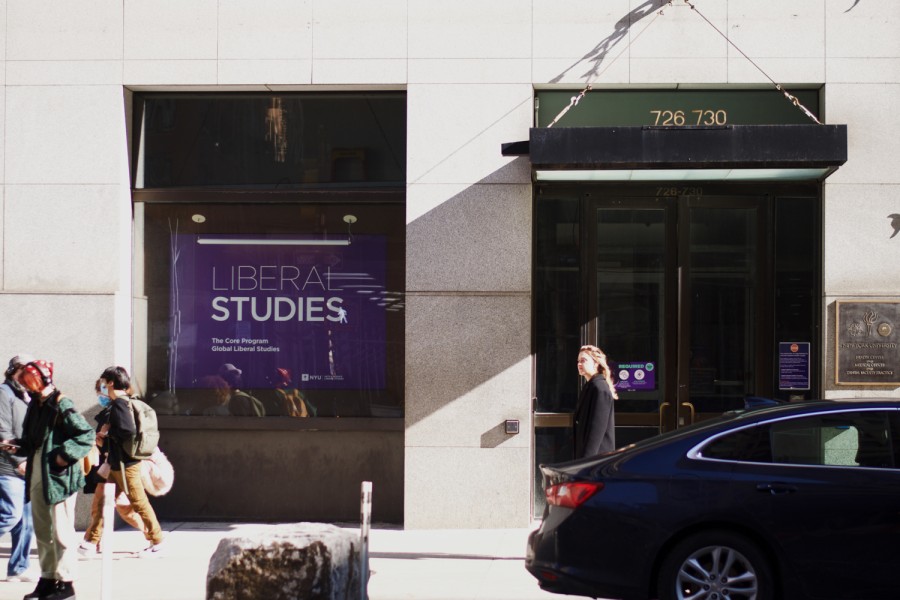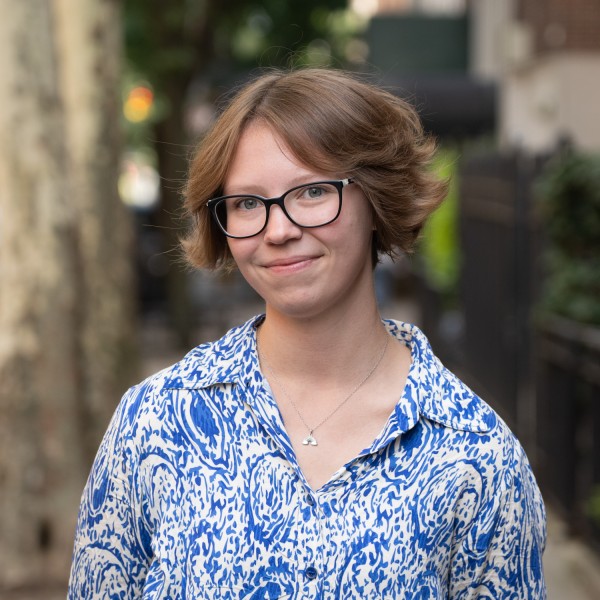Opinion: Liberal Studies students need their own space on campus
The lack of representation for Liberal Studies and Global Liberal Studies compared to other schools is disappointing.
(Camila Ceballos for WSN)
February 22, 2023
Maps of NYU are flooded with building markers, each representing a different academic building — most of which are assigned to a particular school. Zooming in on each marker unveils unique features of each school’s facilities. For instance, the Tisch School of the Arts boasts film studios and a cozy cafe lounge, while Steinhardt’s spaces in the Paulson Center offer state-of-the-art practice rooms and a theater. However, one school is glaringly absent: Liberal Studies. Despite NYU’s multitude of schools and sprawling spread of buildings, Liberal Studies seems to lack a designated facility of its own.
LS is NYU’s second-largest undergraduate degree program, but the only space for LS students on campus is the sixth floor of 726 Broadway. LS students deserve facilities equal to other schools, such as the College of Arts & Science’s lounge and research lab or Stern’s open study spaces — not just a single floor in an unnamed building. Without a more prominent communal space for LS, it feels as though our program is excluded from NYU as a whole.
LS is a program that NYU prides itself on, but there is no designated place for our classrooms. Some will say that the spaced-out classrooms make sense for the program, given that LS is a program without restraints, but due to the absence of distinct classrooms, students experience a diminished sense of community within the large program.
“I’ve had classes all over, from Bobst Library to St. John’s University,” LS first-year Faith Baptista said.
A unique facet of Liberal Studies is the faculty-student connection fostered in our small classrooms, which are no larger than 25 students. The discussions initiated in class frequently spill over into professors’ office hours, but the office spaces on the LS floor are not large enough to accommodate the number of students who use them. Some of my professors have had to move their office hours to other buildings with more space, or just have to stay in the building their class is held in during the day because their office is too far to visit in between classes.
If LS students are looking for a place to study, the lounge on our single designated floor is perfect — to a certain extent. If you visit it, you’ll likely be the only one there. Sure, there’s peace and quiet, but unlike at other schools, you won’t find a lively community of students with whom you can interact, as is the case with the fifth floor of Silver for Classics enthusiasts, for example.
LS first-year Sam Rider believes that the program doesn’t only have a space issue, but also lacks opportunities for community-building events, such as student organizations or LS-specific social events.
“I actually haven’t been to the LS lounge. I didn’t know it existed until fairly recently, as I haven’t had it advertised to me,” Rider said. “I think that, perhaps, if things like this lounge and other Liberal Studies facilities and events were more well advertised, then I would be more likely to incorporate them into my life at school.”
Some may argue that LS doesn’t need a building since it’s just a two-year program, but it prepares students who want to transition into Global Liberal Studies. Students who are planning to transition directly into the GLS program after their sophomore year know the neglect from the university for their program will not change, as they share the same small spaces with LS core students. GLS is much like Gallatin School of Individualized Study in offering concentrations, but as students transition into it, they have fewer opportunities to get involved in their community.
Just because LS is part of the Faculty of Arts & Science, which is the largest division of NYU that includes the Graduate School of Arts & Science, the College of Arts & Science and Liberal Studies, doesn’t mean our spaces have to be conjoined with theirs. If LS is as highly selective as the university claims, it’s time to start treating its students as such. LS students not only need, but deserve, their own space.
WSN’s Opinion section strives to publish ideas worth discussing. The views presented in the Opinion section are solely the views of the writer.
Contact Molly Koch at [email protected].

























































































































































